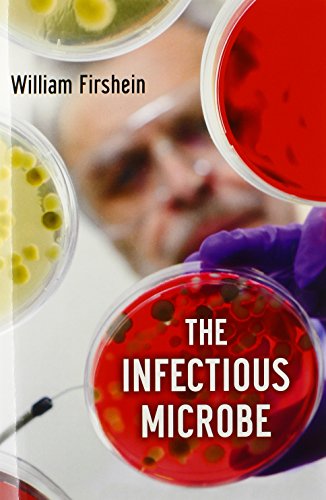میکروب عفونی ۲۰۱۴
The Infectious Microbe 2014
دانلود کتاب میکروب عفونی ۲۰۱۴ (The Infectious Microbe 2014) با لینک مستقیم و فرمت pdf (پی دی اف)
| نویسنده |
William Firshein |
|---|
| تعداد صفحهها |
160 |
|---|---|
| نوع فایل |
|
| حجم |
4 Mb |
| سال انتشار |
2014 |
89,000 تومان
معرفی کتاب میکروب عفونی ۲۰۱۴
در میان تعاملات تقریباً بی پایان بین علم و بشر، تعداد کمی به اندازه میکروارگانیسم ها مهم یا مرکزی هستند. این موجودات تک سلولی “کل” ارتباط نزدیکی با زندگی دارند و باید از بسیاری جهات هنگام در نظر گرفتن رفاه و سلامت عمومی مورد توجه قرار گیرند. اگرچه میکروارگانیسم ها اثرات قابل توجهی بر بسیاری از فرآیندهای شیمیایی و محیطی دارند، اما اغلب به دلیل توانایی آنها در ایجاد بیماری های جدی و گاهی کشنده شناخته می شوند. از بیماری های ناشی از باکتری هایی مانند ذات الریه، سل، سیاه زخم، مننژیت، حصبه، و طاعون ببونیک گرفته تا بیماری های ناشی از ویروس هایی مانند HIV، فلج اطفال، تب زرد، هپاتیت و آنفولانزا، بشریت برای مقابله با قابلیت های به سرعت در حال تغییر خود تلاش کرده است. . این کتاب پاسخی به سردرگمی و درک نادرست موجود در مورد میکروب ها در بین عموم مردم است. این کتاب که به شکل روایت نوشته شده است، به خوانندگان این امکان را می دهد که مفاهیم علمی و اصطلاحات مربوط به چگونگی بروز بیماری های باکتریایی یا ویروسی را بهتر درک کنند، سؤالات هوشمندانه ای در مورد تأثیر این بیماری ها بر سلامت ما بپرسند و گزارش های مربوط به شیوع بیماری ها را در جامعه درک کنند. رسانه. پس از چندین فصل مقدماتی که به معرفی میکروب، تاریخچه آن و مفاهیم اولیه شیمیایی و بیولوژیکی ضروری می پردازد، قلب کتاب به تفصیل شش بیماری جدی باکتریایی و ویروسی را که جهان ما را تحت تاثیر قرار می دهد و چگونگی هر یک از آنها ویژگی های اساسی یک عفونت را توضیح می دهد. هر یک از این شش بیماری مسیر یکسانی را دنبال می کند – تهاجم، انتشار درون زا، اثرات سم و دفع – و درک بیماری زایی به هر یک از خوانندگان درک بهتری از رابطه علمی جذاب بین انسان و ویروس، انسان و میکروب و انسان ارائه می دهد. چگونه با آنها همزیستی کنیم یا آنها را شکست دهیم.



